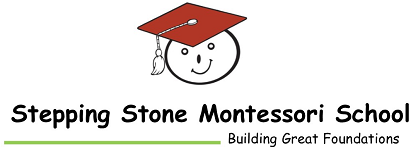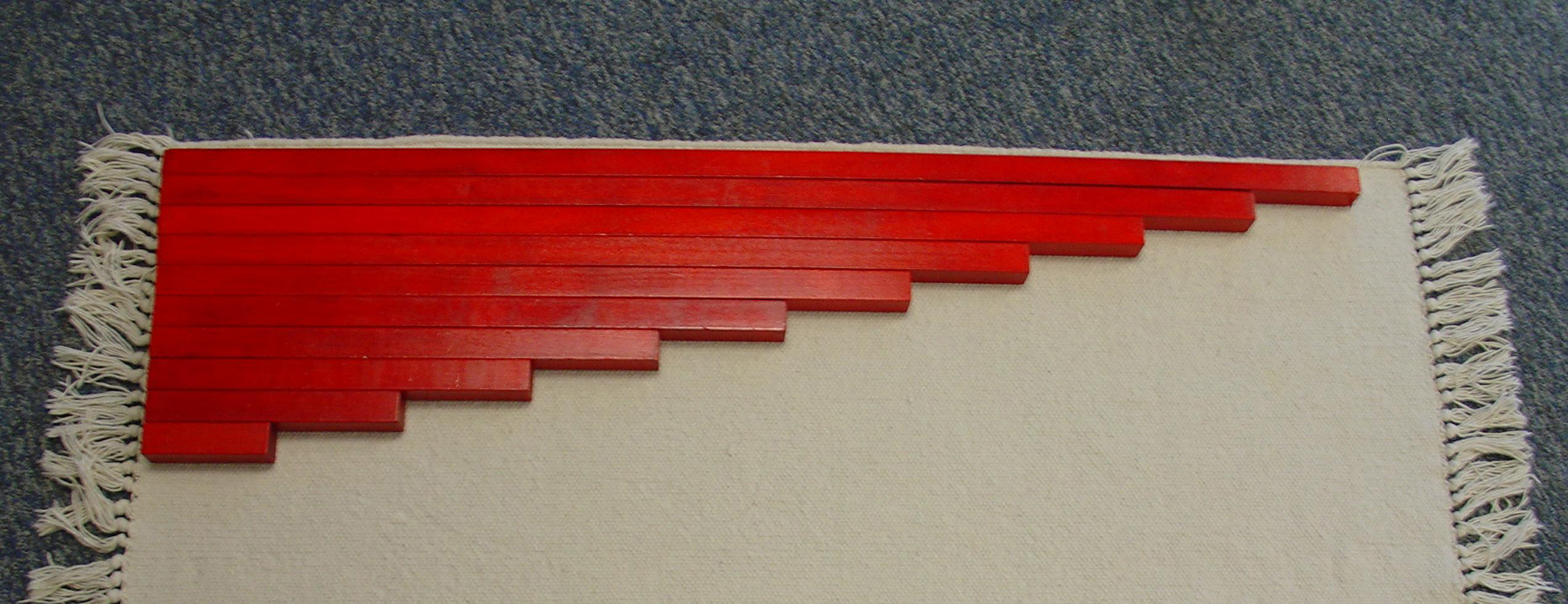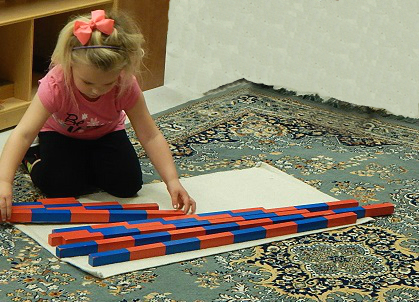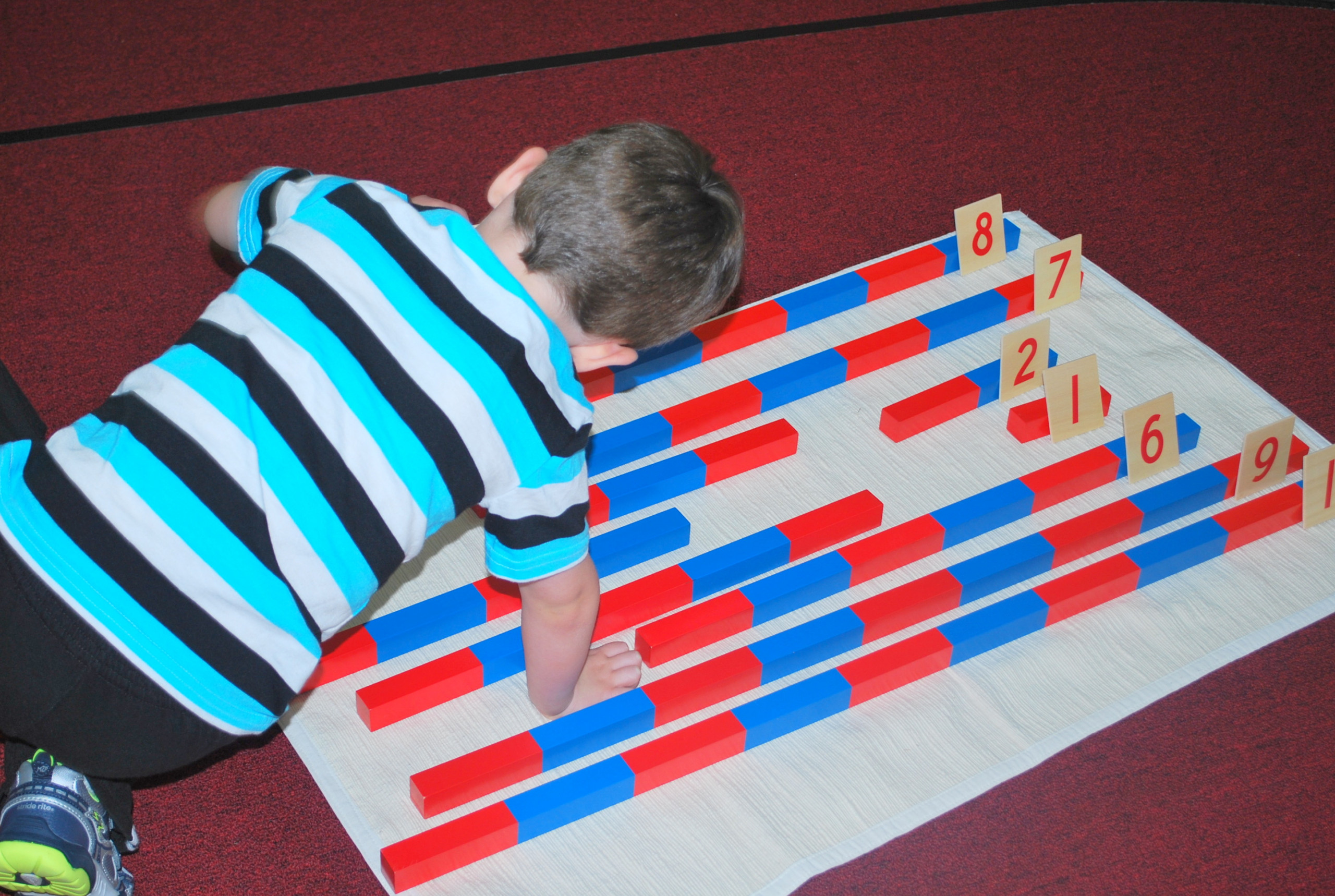Counting has been with us a good, long time. The idea that we could keep track of things by doing so is indeed fascinating and helpful beyond description. Rather than have “one”, “one”, “one”, etc – or rather, “this”, “this”, “this” (since “one” doesn’t come into being until you have the idea of “numbers” to represent quantity) we have the ability to use a simple, short term/symbol to denote the quantity.
The invention of mathematics has taken us from “counting to ten” to the current hi-tech sector with all its high level mathematics. Yet, it still all begins with counting to ten. That is the foundation of the whole system.
In Montessori schools, like here at Stepping Stone Montessori School in Sugar Hill/Suwanee and Cumming, we approach this almost as if each child must go through the original experience of coming up with the idea. We begin with a set of rods that are constructed in base-ten: ten rods, all the same color (to isolate the difference that is meaningful: length), made of wood (so that there is some weight to them), from ten centimeters to a full meter, so that you have perfect increments. The child must carry each rod, one at a time, from its resting place on a shelf to a mat on the floor in the room some distance away. This way the child experiences the properties of each rod- its relative weight and size.
Once all are on the mat in random order the activity is to place them in order. Looking at all of the rods the child selects the longest one, then the next longest, etc. With the rods all aligned on the left side you end up with a display of the ten rods from the longest (10) to the shortest (one). But this is not math work! It is an indirect preparation for it, all part of the brilliant Montessori Curriculum.
Next, there is another set of rods that are identical to the above set but with one critical difference: now there are red and blue sections to denote the “numbers”, or quantities, to be precise. The shortest rod is one red section, the next is a red section and a blue section, and so on. This way the last rod has five red and five blue sections, and we can count them. So, as the child builds the rods in order it is clear that there is a “one”, a “two” and so on. In working with these the child touches each section of a rod while counting out loud. In this way meaning is made. This is the critical part of the Montessori approach and how it ends up being so much richer than the conventional approaches seen in public schools, childcare centers, preschools and in most homes. The conventional approach begins with merely oral counting, so the child memorizes a series of sounds much like they would words of a song. There is no meaning. Because a child can “count to ten” is no indication that they grasp that “three” is “three 1s”. With the Number Rods in Montessori, this is precisely what has been made clear to the child.
The Montessori math materials are brilliant in their design. The same sort of clarity is made possible to children beyond counting to ten. The decimal system, geometry, fractions, etc are all experienced in a way that delivers “meaning making”, which is the key to actual learning and opens the door to the possibility of innovation and invention.



